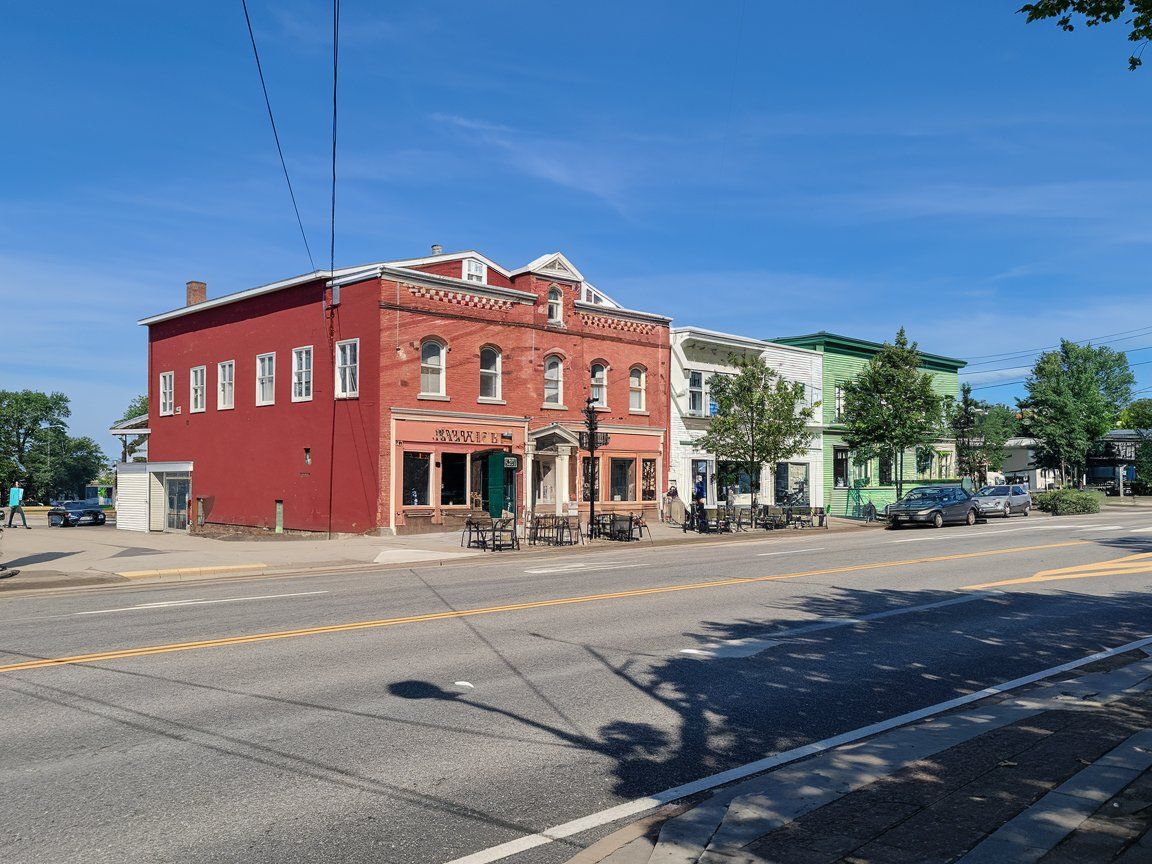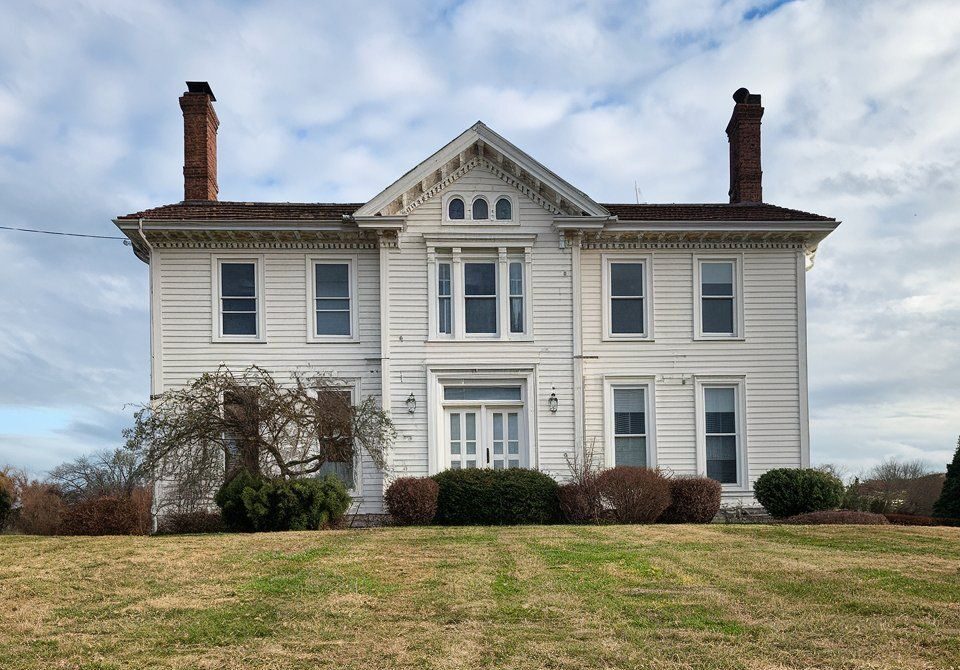
Mystic, Connecticut is a charming coastal town that offers a perfect blend of history, culture, and natural beauty. Plan your visit to Mystic CT for an unforgettable experience filled with maritime heritage, delicious seafood, and scenic views.
You’ll find plenty to do in this quaint New England destination. The Mystic Seaport Museum lets you step back in time to explore America’s rich maritime history. At the Mystic Aquarium, you can get up close with sea life from around the world.
For a taste of local flavors, stroll down Main Street and sample fresh seafood at cozy restaurants. Don’t miss the chance to watch the historic Mystic River Bascule Bridge in action.With its mix of attractions, scenic beauty, and small-town charm, Mystic CT offers a perfect getaway for all ages.
Discover hand-picked hotels and vacation homes tailored for every traveler. Skip booking fees and secure your dream stay today with real-time availability!
Browse Accommodations Now
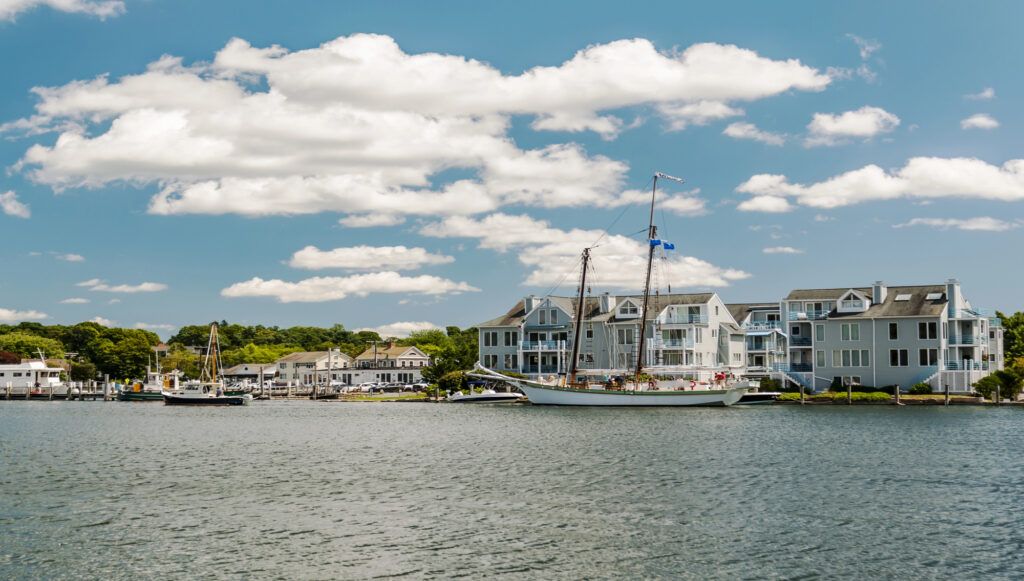
How to Get to Mystic
Mystic is easy to reach by various means of transport. If you’re driving, take I-95 and use exits 89 or 90. The town is just a short drive from the highway. By train, Amtrak offers a convenient and eco-friendly option. The station is located right in town, making it simple to start your visit as soon as you arrive.
Flying? The closest airports are:
- T.F. Green Airport in Providence, RI (about 45 minutes away)
- Bradley International Airport in Hartford, CT (about 1.5 hours away)
You can also reach Mystic by boat. The town has several marinas that welcome visitors. For a scenic route, consider taking the Cross-Island Ferry from Orient Point, NY to New London, CT. From there, it’s a quick drive to Mystic. No matter how you choose to travel, you’ll find Mystic is well-connected and ready to welcome you. Its central location makes it an ideal stop on any New England trip.
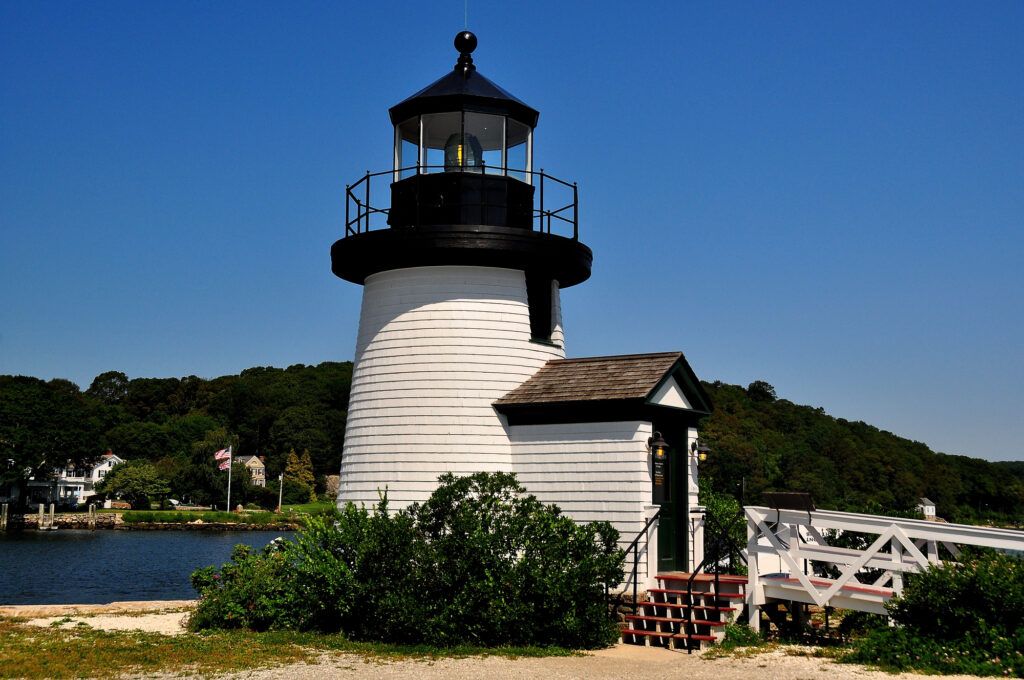
What to See in Mystic
Mystic offers a wealth of attractions for visitors. The Mystic Seaport Museum is a must-see. It’s a living history museum with tall ships, including the Charles W. Morgan, the last wooden whaling ship in the world. The Mystic Aquarium is another top spot. You can see beluga whales, sea lions, and penguins up close. It’s great for kids and adults alike.
Take a stroll down Main Street for unique shops and dining. Don’t miss Mystic Pizza, made famous by the 1988 movie. For a taste of colonial life, visit Olde Mistick Village. It’s a recreation of an 18th-century New England village with shops and eateries.
The Mystic River Bascule Bridge is a local landmark. Watch it open for boats passing through. For a spooky twist, try a ghost tour of Mystic’s haunted spots. End your day with a scenic river cruise for stunning views of the coastline.
Read our articles on the best things to do in Mystic, Connecticut and best restaurants in Mystic, Connecticut for even more ideas!
Where to Stay in Mystic
Read our article on hotels near Mystic, Connecticut for the best options for your stay. Here’s a short list of some options:
If you’re looking to stay in a vacation home, apartment, BnB, or VRBO in Mystic, Connecticut, we recommend you search on VRBO, Hotels.com, and Booking.com for up-to-date options.
History of Mystic
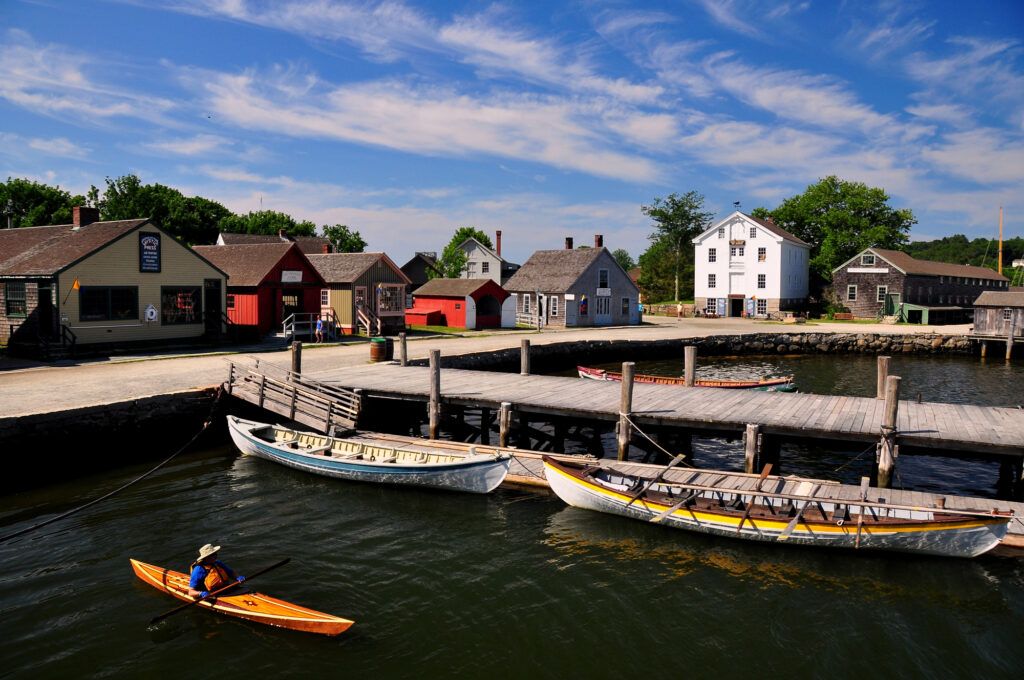
Mystic’s story began long before European settlers arrived. The Pequot people called this area home, naming it “missi-tuk” meaning “a large river whose waters are driven into waves by tides or wind.” In the 17th century, English colonists established Mystic. The town quickly became known for its shipbuilding industry. Skilled craftsmen constructed vessels that sailed the world’s oceans.
During the War of 1812, Mystic’s economy boomed. Local entrepreneurs seized opportunities created by the conflict, boosting the town’s growth and prosperity. By the late 19th century, Mystic had transformed into a thriving maritime community. The Charles W. Morgan, the last wooden whaling ship in existence, was built here in 1841.
In 1929, the Mystic Seaport Museum was founded. This living history museum preserves the town’s rich maritime heritage, showcasing historic vessels and recreating a 19th-century coastal village. Today, Mystic blends its storied past with modern charm. You can explore centuries of nautical history while enjoying contemporary attractions. The town’s evolution from Pequot village to tourist destination offers a fascinating glimpse into Connecticut’s coastal legacy.
Towns Near Mystic
Mystic’s charm extends to its neighboring towns, each offering unique experiences. New London County is filled with delightful spots to explore.
Stonington Borough, just minutes away, boasts quaint streets and historic homes. You’ll find antique shops, art galleries, and seafood restaurants here. Don’t miss the chance to visit Stonington Vineyards for a taste of local wines.
Groton, home to the USS Nautilus and Submarine Force Museum, is perfect for history buffs. You can learn about submarine technology and even tour a real submarine. Westerly, Rhode Island, sits right on the Connecticut border. Its beautiful beaches and lively downtown make it a great day trip destination.
Old Lyme offers a different flavor with its thriving arts scene. The Florence Griswold Museum showcases American Impressionist art in a charming setting. Norwich, known as “The Rose of New England,” features Victorian architecture and the Mohegan Sun casino for entertainment.
Each of these towns adds to the rich tapestry of experiences you can enjoy during your visit to Mystic. They’re all within easy reach, making day trips a breeze.
Find available hotels and vacation homes instantly. No fees, best rates guaranteed!
Check Availability Now
Nearby Town Travel Guides
Bozrah, Connecticut Travel Guide – History, Travel, Hotels, and More!
Colchester, Connecticut Travel Guide – History, Travel, Hotels, and More!
East Lyme, Connecticut Travel Guide – History, Travel, Hotels, and More!
Franklin, Connecticut Travel Guide – History, Travel, Hotels, and More!
| Bozrah | Colchester | East Lyme |
| Franklin | Griswold | Groton |
| Lebanon | Ledyard | Lisbon |
| Lyme | Montville | Mystic |
| New London | North Stonington | Norwich |
| Old Lyme | Preston | Salem |
| Sprague | Stonington | Voluntown |
| Waterford |



